The content of the article
The appearance of fungus on the walls of the apartment brings a lot of trouble to its inhabitants. In addition to unattractive dark spots and a specific smell in the room, there is a real threat to the health of all households. This problem is faced by many, especially with the onset of cold weather. But if you take competent disinfection measures and eliminate the factors that triggered the appearance of the fungus, you can forever forget about this scourge, returning comfort and coziness to your home.
Reasons for the appearance of fungus in the apartment
The main reason why the fungus appears in the room is the increased humidity. Together with room temperature, it creates ideal conditions for the life of microorganisms, as well as for their active reproduction. An increase in moisture can be triggered by a number of factors, the most common of which is insufficient ventilation.
The real enemy for a healthy microclimate in the apartment is the installation of low-quality plastic windows. Often, wanting to save money, their manufacturers violate the technology of production and installation. The result is fogging of the double-glazed windows, indicating the condensation of excess moisture on them. Doors with increased tightness cause similar damage - after their installation, air exchange is disturbed. Under such conditions, the occurrence of the fungus remains only a matter of time.
Overhauls in the room can also cause mold. The greatest danger is represented by additional wall insulation, which is often decided by residents of old houses. It must be understood that each building is designed taking into account the climatic features of the region, and at the same time, calculations of thermal insulation and thermal conductivity have been performed. By creating an additional insulation layer, the owner of the apartment upsets the balance created during the construction of the house. And some careless residents during the redevelopment completely destroy the ventilation shafts, which, of course, will also immediately affect the indoor climate.
If the appearance of the fungus is found only in the corner facing the external wall, then the cause must be sought in it. For example, it may be a crack or destruction of building materials under the influence of adverse weather conditions. Through such damage, moist air enters, rainwater flows. Hence the formation of dampness. And when the microorganism hits the floor coverings, the reason often lies in the moist air coming from the basement.
Of course, very often the fungus appears in places predisposed to increased humidity: kitchen, bathroom and toilet, although with proper ventilation of the room there should not be any inconvenience. If the air exchange passes correctly, and the dampness only increases, then the problem should be sought in the integrity of water and sewer pipes.
In addition to the above reasons, high humidity in the room can be caused by frequent floor cleaning, the presence of an aquarium and even a large number of indoor plants. An acceptable indoor humidity figure is 40-60%.
Types of fungi in the apartment
The most common types of living spaces are:
- mold fungus - black, brown, greenish spots on the walls and wallpaper, well known to everyone;
- blue stain, affecting wooden structures;
- rotting fungus, which also prefers to hit wood.
The real scourge of apartments is mold, which is a colony of unicellular mushrooms. It can also be of different types, which are different from each other in color and structure.
The interior walls of the house and their decoration, as a rule, are affected by black mold, which is a plaque of the corresponding color. It includes many different strains of the fungus. Some of them are almost safe, but most are capable of causing considerable harm to the health of the residents of the apartment in which this rapidly multiplying microorganism appeared. Also, black mold causes great harm to the appearance of the room and building materials, penetrating deep into their structure and destroying from the inside.
What is dangerous fungus in a living room
Since the fungus is a microorganism, the coexistence of a person with it never passes without a trace. This interaction occurs by:
- tactile contact (a person touches a mold colony);
- through the digestive system (a person eats food with a fungus);
- through the respiratory and circulatory system (the inhabitant of the apartment in which the mold settled, certainly breathes in spores and waste products of microorganisms).
The highest danger is toxic substances that are produced by a colony of mushrooms. They are called aflatoxins. These harmful compounds, when regularly ingested, accumulate and cause poisoning. In addition, they provoke the growth of cancer cells. Since the liver, which is a kind of filter for blood, is primarily under attack, there is a risk of a tumor in it. The outlook is unpleasant!
Also, fungal settlements inevitably produce a huge amount of spores. For example, one square meter produces about a billion in 24 hours. They spread easily throughout the room, entering the human body through the digestive system and respiratory system. The list of diseases that provoke spores is extensive.
Diseases that the fungus causes:
- respiratory tract;
- skin;
- gastrointestinal tract;
- allergic, etc.
Inhalation of spores and toxins is especially dangerous for people with reduced immunity: the elderly, children undergoing antibiotic treatment. If a person living in an apartment that is affected by a fungus falls ill with ARVI, then the recovery period will increase significantly. Also, inhalation of mold negatively affects the state of allergy sufferers and those who suffer from bronchial asthma or tuberculosis.
How to get rid of a fungus in an apartment
There are many ways to disinfect wall areas that have been infected by fungus. This can be the use of both specialized fungicides and antiseptic compounds, as well as folk remedies. But simply processing the walls is not enough, because it will destroy only the emerging colony of mold, and not the reason why it appeared. An integrated approach is the key to success in the struggle for space without unpleasant microscopic roommates.
Three important components of the elimination of fungus in the apartment:
- elimination of factors provoking the formation of mold;
- destruction of a colony of microorganisms;
- disinfection of the affected area of the wall.
Eliminate the causes
It is very important to identify the reasons why the fungus settled in the house. The success of disinfection measures depends on how successfully they are eliminated. In addition to processing the surface of the wall, it is necessary to establish the work of ventilation, to eliminate the source of high humidity. If the apartment has a healthy microclimate, then the fungus will no longer return to it. And if you neglect the ventilation of the room, that black spots will appear again and again.
We destroy the colony of the fungus and disinfect the walls
It must be said right away that any manipulations carried out with mold can adversely affect the human body.Therefore, it is necessary to protect hands with rubber gloves and wear a respirator, because such precautions will exclude contact with spores and harmful compounds that are produced by mold. Also, the stain of the fungus needs to be moistened with water so that the mold does not fly around the room. It will be useful to open a window if weather conditions allow it.
Now you need to destroy the mold colony:
- The first step is to remove the wallpaper on the affected area, because they certainly can not be saved. The fungus has long been ingrained in their structure.
- Armed with a spatula or a brush with a hard pile, you need to clean the wall from mold and thoroughly wipe these places with sandpaper.
Microorganisms penetrate the interior of the finishing materials, so you need to remove not only the black layer, where mold is visible to the naked eye, but also a few millimeters of plaster.
Now came the turn of disinfection activities. You can use two types of funds: special antiseptic, fungicidal compounds, which are presented in a wide range in hardware stores, and folk.
Some items from the store:
- An antiseptic primer is perhaps the best way to get rid of mold stains on the walls. It is used in the same way as usual, and is sold in construction markets. The composition includes substances that kill microorganisms and prevent their further appearance.
- Fongifluid Alpa fungicidal solution sold in cans of various volumes. Its main advantage is versatility, because with this composition you can process any surface: plaster, concrete, wood and many others. etc. In addition, it does not include chlorine, which is a component of many other drugs designed to fight the fungus. Due to this, the solution does not have a specific smell.
- "OLIMP Stop mold" - a composition that removes microorganisms of the same name. It is recommended for the use of wall disinfection in rooms with high humidity, and is also great for treating roofs, cornices, verandas, etc. Available in a capacity of 5 liters.
- "Titanium Fungicide" - a solution that perfectly destroys the fungus and its spores. It is used both in the disinfection process and for effective prevention.
Folk remedies against fungus:
- Bleach destroys almost all types of mold and its spores due to the presence of sodium hydrochloride in its composition. For surface treatment, it must be diluted with water in a ratio of 1:10. It should be remembered that this is a very toxic solution, and also capable of corroding the skin. Therefore, before using it, great attention should be paid to safety measures, wearing gloves and opening a window so that vapors of harmful substances do not accumulate in the room.
- More safe is simple table vinegar, which is an acid that destroys various molds. It, like bleach, has a pungent odor, but does not contain toxic substances.
- Tea tree oil, diluted with water in a ratio of 1 spoon to 1 glass of water.
- Hydrogen peroxide 3%, which can be purchased at a low price in any pharmacy, will also cope with the task of destroying mold. It is both antibacterial and antifungal.
- A solution of baking soda, which is a completely safe composition. It has no smell and harmful compounds. To prepare it, you need to take a teaspoon of soda and dilute it in a glass of water.
After the layer that has been infected by the fungus is removed from the wall, the selected product is applied to it. If it is a liquid composition, you can use a spray bottle, roller or sponge. 2-3 layers should be done, and each of them is applied after the previous one is completely dry. After disinfection is complete, a primer can be applied and the wall smoothed.
You can also purchase special paints and varnishes, which include antiseptic and fungicidal substances.Their use is relevant for residents of houses with wooden walls and for those who prefer paint from all finishing materials.
Fungal Prevention
So that mold and other types of fungus do not appear in the house, you need to follow some simple rules:
- It is necessary to find violations of ventilation draft and correct them.
- The rooms should be regularly ventilated. It is advisable to make a habit 2-3 times a day to open the window for 10 minutes.
- It is necessary to monitor the integrity of the external walls and the roof, and in case of defects, immediately eliminate them by contacting the management company for help.
- If the water or sewer pipe starts to leak, the damage must also be repaired as soon as possible. And worn parts must be replaced with new ones.
- It is recommended to regularly inspect the walls, corners and secluded places for the appearance of the fungus, and if it is detected, take immediate measures. The smaller the affected area, the easier it will be to cope with the scourge!
Fungus in the apartment is a serious but fixable problem. It is important to remember that removing mold from the wall and disinfecting the area is not enough, it is also necessary to eliminate the causes that caused the appearance of microorganisms. Using an acquired or home remedy and adhering to the above action plan, you can expel the fungus from the walls of the house forever.
Video: how to get rid of mold folk remedies

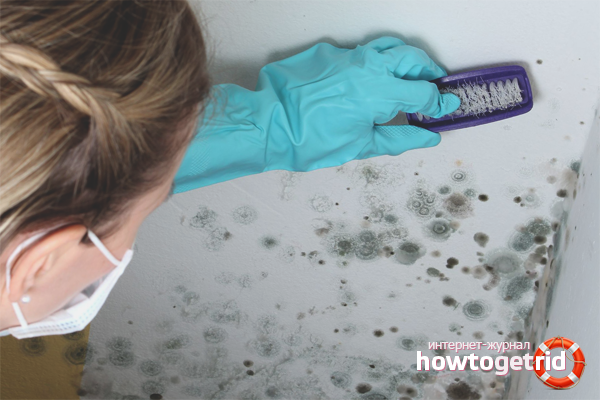
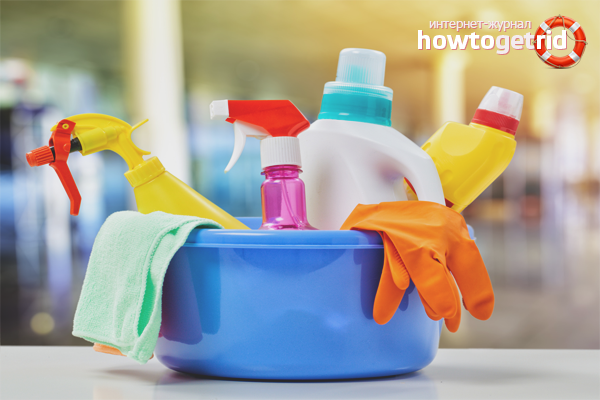


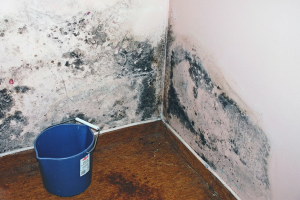
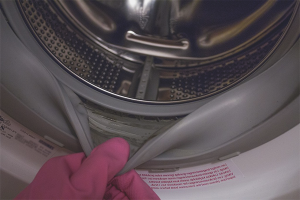
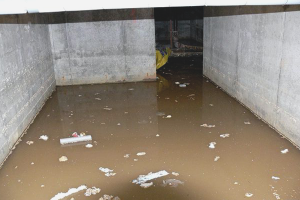
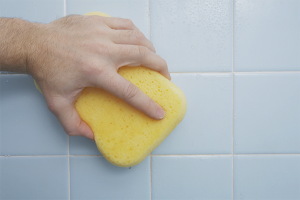
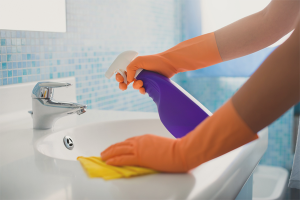
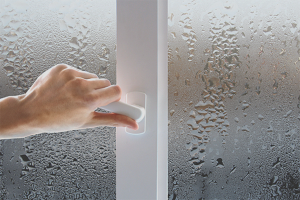
Submit